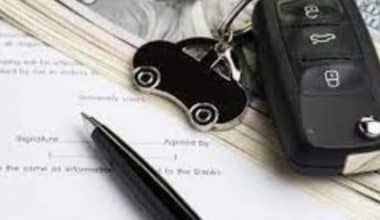Non-recourse debt is a type of loan that is usually secured by real estate as collateral. Even if the collateral doesn’t cover the defaulted amount in full, the issuer can still take it if the borrower doesn’t pay back what they owe. They can’t go after the borrower for more money. The borrower is not held personally accountable for a non-recourse debt. If the resale value of the loan’s collateral falls below the outstanding total throughout the length of the loan, non-recourse debt puts the lender at a higher risk than recourse debt. This article discusses whether nonrecourse debt increase tax basis, recourse vs nonrecourse debt, and the definition of nonrecourse debt in a partnership.
What is Nonrecourse Debt
Recourse debt is the responsibility of the borrower, but non-recourse debt is backed by certain collateral. If a borrower doesn’t pay back the loan, they must sell the collateral to pay off the remaining balance. The borrower doesn’t have to make up any difference between the value of the collateral and the remaining loan balance. Most of the time, the interest rate on non-recourse debt is higher than on recourse debt because the lender is taking on more risk. People frequently use real estate as collateral, but other types are possible.
Non-recourse loans are not commonly available from banks. It leaves businesses open to damages if their clients can’t pay back their loans and their collateral isn’t enough. If there is still debt after the loan-backed asset has been sold, the lender is responsible for any losses. It has no right to any other money, property, or income belonging to the borrower.
More about Nonrecourse Debt
Potential borrowers might like the idea of waiting for non-recourse loans, but the interest rates on these loans tend to be higher. They only extend to those with exemplary credit ratings. Non-recourse debt has consequences for not paying it back, such as losing the collateral, hurting the borrower’s credit score, and possibly having to pay taxes. Non-recourse debt is not a get-out-of-loan-free card.
However, you can use financial assets, equipment, and other objects to secure non-recourse loans. Common examples of non-recourse debts are mortgages. Lenders typically loan less than 80% of the property’s commercial worth in order to protect themselves. During the current subprime crisis, there were many times when they give out non-recourse loans for the full value of the property. Due to the fact that the asset value was significantly lower than the outstanding mortgage balance when home values started to fall and borrowers started to default, lenders suffered significant losses.
Does Nonrecourse Debt Increase Tax Basis
Usually, nonrecourse debt increases a partner’s basis for distribution. The at-risk rules, however, do not experience this foundation increase. They take these regulations into account when subtracting losses from a partnership.
Unlike recourse debt, which raises the partner’s basis for distribution and loss deduction, this one is different. This is done so that if the borrower doesn’t pay back the loan, the lender can only try to get their money back from the property that was used as collateral.
What is Tax Basis?
Tax basis in real estate investing refers to the capital that has been put into a property for tax purposes. The IRS starts with a partner’s basis when figuring out things like amortization and depreciation.
The IRS calculates capital gains taxes on property sales using the basis.
It’s important to know that the foundation is usually different from the property’s assessed value.
What is Qualified Non-Recourse Debt?
The debt owed by a partnership can often be divided into three categories: qualified non-recourse, recourse, and non-recourse. Between these two phrases, there is a difference in how much the borrower is personally responsible for their share of the debt.
By using qualified non-recourse debt, a qualified person can avoid having to pay back the partnership’s debt on their own. In this case, a person who regularly gives out loans as part of their job, like a bank, is qualified. The financial institution is always virtually into this. These non-recourse loans may also be issued by or guaranteed by the government.
Examples of Nonrecourse Debt
“Non-recourse debt” refers to a loan that is backed by a certain piece of property. Most of the time, they usually use a piece of real estate to back up this type of debt.
A new car’s value will typically decrease after the purchase if an auto lender lends a customer $30,000 at zero interest for a five-year loan to buy one. If the borrower stops paying, the car is worth $22,000 after a year, but they still owe $26,000.
Due to the client’s failure to pay, the lender seizes the vehicle and sells it for its full market value, leaving a $4000 shortfall. If the loan was non-recourse, the lender bears the loss.
Recourse vs Nonrecourse Debt
When looking for a real estate loan, non-recourse vs recourse loans are two general categories that are frequently used. When applying for a loan, whether for residential or commercial property, there are undoubtedly numerous things to take into account. Interest rates, how much the borrower can afford, and how comfortable they feel with the lender are all important factors. But deciding between a recourse loan and a non-recourse loan is one of the most important things to do.
If a borrower doesn’t pay back a loan and the amount owed is more than the value of the collateral, the lender can go after other assets with a recourse loan . A non-recourse lender can only sell the collateral if the borrower defaults.
It is possible to secure any sort of loan with collateral. If the borrower doesn’t pay back the loan, the lender can seize some of the borrower’s properties to get their money back. However, a recourse debt allows the lender to seize borrower assets beyond the collateral’s value to cover losses.
More on Recourse vs Nonrecourse Debt
If the borrower doesn’t pay back the debt, recourse debt gives the creditor the right to go after the borrower for the full amount. Unsecured and secured personal loans both have the potential to be recourse debts, which means the borrower is personally liable and bears the entire risk. Any excess that is left over after liquidating the collateral is referred to as a “shortfall balance.”
The lender can sue and acquire a deficiency judgment to recover this money.
When a debt is non-recourse, the lender can sell the security but can’t try to get the unpaid amount back. In a non-recourse loan, the bank bears the majority of the risk.
What Is Nonrecourse Debt in a Partnership?
If no partner or individual affiliated with a partner carries the financial risk of loss, a partnership’s liability is nonrecourse. When it comes to partnerships, nonrecourse liabilities are only repaid in full from the business’s profits.
What Is the Risk of a Non-recourse Loan?
If a borrower does not pay back a non-recourse loan, the lender can only take the property that was used as loan collateral. The lender takes on the risk and often loses money if the property’s value goes down or if there are big problems with it that aren’t obvious.
Who Benefits From a Nonrecourse Loan?
Nonrecourse loans are good for the borrower because they don’t have to put their own assets on the line. You cannot sue the borrower in court, no matter what the lender or bank does. This kind of debt that can’t be paid back usually doesn’t hurt the borrower’s credit score either.
Do Banks Do Nonrecourse Loans?
Non-recourse loans are rarely provided by banks. Some borrowers may be able to get them, but the terms and interest rates may be much more expensive.
Does Nonrecourse Debt Give Partner Basis?
Usually, nonrecourse debt increases a partner’s basis for distribution. The at-risk rules, however, do not experience this foundation increase. When subtracting losses from a partnership, these regulations are taken into account.
Unlike recourse debt, which raises the partner’s basis for distribution and loss deduction, this one is different. If the borrower doesn’t pay back the loan, the only thing the lender can do is take back the property that was used as collateral.
Can a Limited Partner Guarantee a Loan?
A limited partner, on the other hand, is not responsible for the debts of the partnership unless they sign a personal guarantee for the loan. However, general partners are typically held individually accountable for these loans.
Can Recourse Debt Be Pursued in a Limited Partnership?
When a limited partnership doesn’t pay back its recourse loans, the lender can’t go after the partners personally. This is because the partnership is limited. The key distinction between limited and general partnerships is this.
Banks will probably require any partners to sign a personal guarantee if they hold more than 20% of the business, even though limited partnerships offer more security for partners than general partnerships do.
How to Avoid Personal Liability
When investors learn about liability, they will naturally try to limit their exposure as much as possible. Most lenders would not approve arrangements where the operators are not personally accountable in the case of default, at least in the beginning. Some liability can be avoided by either incorporating or creating a limited partnership.
Don’t expect lenders to take a chance on a loan that could result in a financial loss for them. To build trust, the operators must have a good working relationship with the lender and a clean record, or the arrangement must be so good that the bank can almost guarantee repayment of their loan if the operators don’t pay back their loan.
Banks will, however, be more inclined to lend to those operators with better terms and fewer restrictions after confidence has been established.
How Do I Allocate Non-recourse Debt to Partners?
According to the legislation, nonrecourse obligations must be allocated in three steps:
Partnership Minimum Gain
First, each partner must get nonrecourse obligations that are equal to their share of the “minimum gain for the partnership.” This will only be the case if the partnership holds depreciable assets that are part of the nonrecourse loan’s security.
The difference between the principal amount of a nonrecourse loan and the property’s depreciable base is the minimum gain for a partnership. This term was made up because Section 1001 says that a partnership is considered to have sold property for the amount of a loan’s principal if it gives property back to the lender in exchange for nothing more than the debt being paid off.
Gain under Section 704(c)
Responsibility must be allocated to a partner under Step 2 to the extent that the liability exceeds the tax basis at the time of the contribution if a partner contributed appreciated property to the partnership that secured the liability.
Profit Ratio
If there is no minimum gain or Section 704(c) gain, it is easy to figure out how to divide up nonrecourse liabilities. A partner’s share of a nonrecourse liability should be recognized as a recourse liability and assigned to that partner if the partner made the loan or guaranteed the debt personally. Following these rules, they will give any remaining nonrecourse responsibility to the right person. The full non-recourse share of the gain should be awarded in accordance with the profits ratio if there is no minimum gain or Section 704(c) gain to be distributed.
When Is a Loan Issued as Non-Recourse?
State law frequently determines whether a debt is a recourse or nonrecourse loan.
In some areas, all mortgages may be required to be nonrecourse debt, and in the event of a default, lenders cannot seek a deficiency judgment after seizing property.
Do You Have to Pay Back a Recourse Loan?
Loans that can be paid back with additional interest are called recourse loans. If it is required by the loan’s terms and conditions, it must be repaid. If you can’t pay back the loan in full at interest rate, the lender can take other assets to make up for the loss.
Who Can Qualify For a Non-Recourse Loan?
Because non-recourse debt is riskier for the lender, the borrower might need a good credit score and a low loan-to-value ratio. Non-recourse loans may also have higher interest rates as a way of making up for the risk.
How Are Liabilities Paid For a Recourse Loan?
After the collateral has been taken, a shortfall judgment can take money from the borrower’s bank accounts or take money from his or her wages to cover the remaining amount.
Final Thoughts
Non-recourse debt is marked by high capital outlays, long loan terms, and unclear sources of income. Underwriting is a requirement, for financial modeling expertise and thorough technical domain knowledge for these loans. Lenders make borrowers meet stricter credit requirements to reduce the chance that they will not pay back their loans. Since there is more risk with non-recourse loans, the interest rates are higher than with recourse loans.
Related Articles
- NON RECOURSE FINANCING: Meaning and How It Works
- SMALL BUSINESS FACTORING: The Ultimate Guide for Small Business Owners
- Invoice Discounting: Explained!! (+ Quick tools & amp; all you need)
- AFFILIATE PARTNERSHIP: Definition, Examples, and Agreement Templates
- PROJECT FINANCE: Simple Guide to Kick start any Project(+ best picks)






